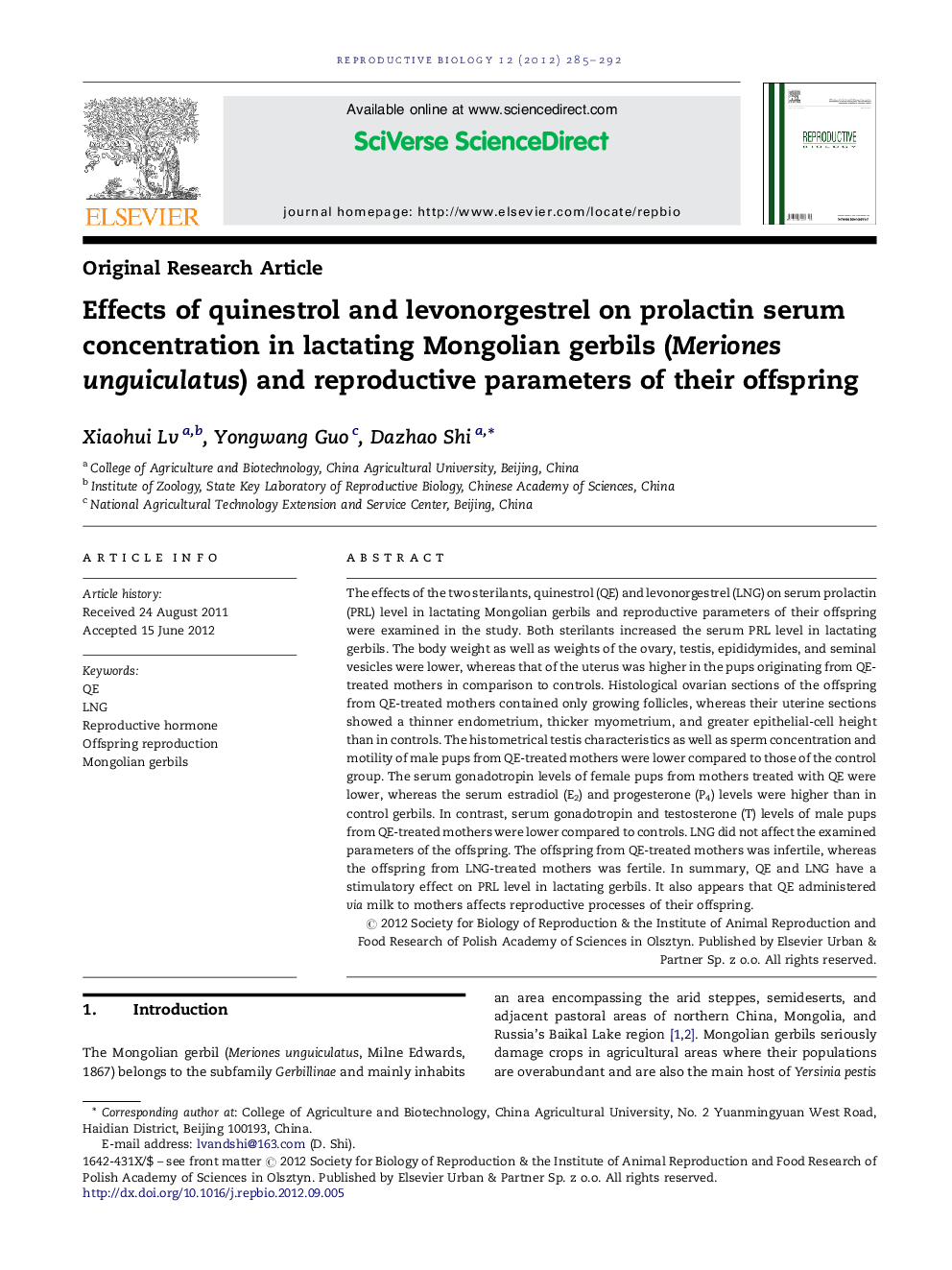| Article ID | Journal | Published Year | Pages | File Type |
|---|---|---|---|---|
| 2062680 | Reproductive Biology | 2012 | 8 Pages |
The effects of the two sterilants, quinestrol (QE) and levonorgestrel (LNG) on serum prolactin (PRL) level in lactating Mongolian gerbils and reproductive parameters of their offspring were examined in the study. Both sterilants increased the serum PRL level in lactating gerbils. The body weight as well as weights of the ovary, testis, epididymides, and seminal vesicles were lower, whereas that of the uterus was higher in the pups originating from QE-treated mothers in comparison to controls. Histological ovarian sections of the offspring from QE-treated mothers contained only growing follicles, whereas their uterine sections showed a thinner endometrium, thicker myometrium, and greater epithelial-cell height than in controls. The histometrical testis characteristics as well as sperm concentration and motility of male pups from QE-treated mothers were lower compared to those of the control group. The serum gonadotropin levels of female pups from mothers treated with QE were lower, whereas the serum estradiol (E2) and progesterone (P4) levels were higher than in control gerbils. In contrast, serum gonadotropin and testosterone (T) levels of male pups from QE-treated mothers were lower compared to controls. LNG did not affect the examined parameters of the offspring. The offspring from QE-treated mothers was infertile, whereas the offspring from LNG-treated mothers was fertile. In summary, QE and LNG have a stimulatory effect on PRL level in lactating gerbils. It also appears that QE administered via milk to mothers affects reproductive processes of their offspring.
